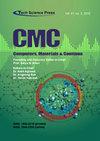基于未知种群数据的时空疾病聚类特征空间检测方法
IF 1.7
4区 计算机科学
Q3 COMPUTER SCIENCE, INFORMATION SYSTEMS
引用次数: 1
摘要
时空疾病聚类检测有助于开展疾病监测和实施控制策略。解决这类问题的最先进的方法是时空扫描统计(SaTScan),由于其参数模型假设(如泊松计数或高斯计数)对非传统/非临床数据源有限制。为了解决这个问题,最近提出了一种基于特征空间的方法,称为多特征点,作为一种非参数解决方案。然而,它所依据的是人口统计数据,而这些数据在最不发达国家并不总是可用的。此外,对于一些监测数据,如急诊就诊和非处方药销售,人口数量难以估计,因为每家医院/药房的覆盖范围不明确。我们扩展了基于种群的多特征点方法,仅通过观察/报告的疾病计数来近似潜在的疾病群集,而不需要种群计数。拟议的适应使用了一个不依赖于种群数量的预期疾病数量估计值。在真实数据集上对该方法进行了评估,并将结果与基于种群的方法(Multi-EigenSpot和SaTScan)进行了比较。结果表明,所提出的自适应方法可以有效地逼近基于种群的方法的重要输出。本文章由计算机程序翻译,如有差异,请以英文原文为准。
An Eigenspace Method for Detecting Space-Time Disease Clusters with Unknown Population-Data
Space-time disease cluster detection assists in conducting disease surveillance and implementing control strategies. The state-of-the-art method for this kind of problem is the Space-time Scan Statistics (SaTScan) which has limitations for non-traditional/non-clinical data sources due to its parametric model assumptions such as Poisson or Gaussian counts. Addressing this problem, an Eigenspace-based method called Multi-EigenSpot has recently been proposed as a nonparametric solution. However, it is based on the population counts data which are not always available in the least developed countries. In addition, the population counts are difficult to approximate for some surveillance data such as emergency department visits and over-the-counter drug sales, where the catchment area for each hospital/pharmacy is undefined. We extend the population-based Multi-EigenSpot method to approximate the potential disease clusters from the observed/reported disease counts only with no need for the population counts. The proposed adaptation uses an estimator of expected disease count that does not depend on the population counts. The proposed method was evaluated on the real-world dataset and the results were compared with the population-based methods: Multi-EigenSpot and SaTScan. The result shows that the proposed adaptation is effective in approximating the important outputs of the population-based methods.
求助全文
通过发布文献求助,成功后即可免费获取论文全文。
去求助
来源期刊

Cmc-computers Materials & Continua
工程技术-材料科学:综合
CiteScore
5.30
自引率
19.40%
发文量
345
审稿时长
1 months
期刊介绍:
This journal publishes original research papers in the areas of computer networks, artificial intelligence, big data management, software engineering, multimedia, cyber security, internet of things, materials genome, integrated materials science, data analysis, modeling, and engineering of designing and manufacturing of modern functional and multifunctional materials.
Novel high performance computing methods, big data analysis, and artificial intelligence that advance material technologies are especially welcome.
 求助内容:
求助内容: 应助结果提醒方式:
应助结果提醒方式:


